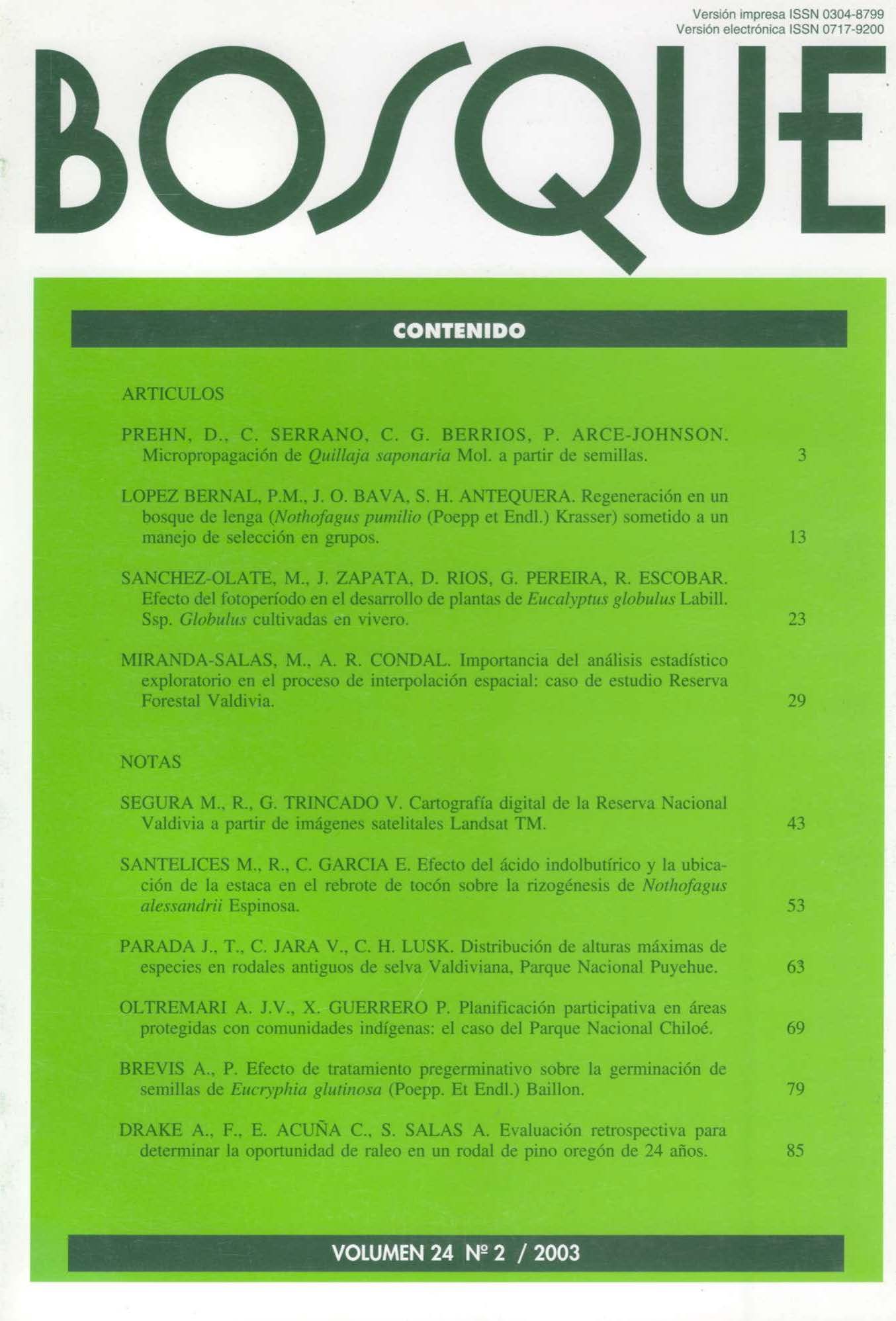Main Article Content
Aug 29, 2003
Abstract
A model published by Terborgh predicts that vertical stratification will arise in all forests because of the geometry of light penetration. Here we present data on the maximum heights of 15 co-occurring tree species in an old-growth Chilean rain forest and test for evidence of species grouping in discrete strata. Although the data suggest a tendency for most species to be grouped in strata, this result was not statistically significant (P = 0.11). This non-significant result reflects the presence of opportunistic species of intermediate stature (e.g. Luma apiculataand Caldcluvia paniculata), which regenerate mainly in tree-fall gaps. These gap-regenerating species are minor stand components, reflecting the relative scarcity of opportunities for their development. However, the most common species belonged either to the main canopy (Laurelia philippiana and Aextoxicon punctatum) or to the understory (Myrceugenia planipes). The status of Nothofagus dombeyi as the tallest species is clearly confirmed, being taller than the others by > 10 m.


